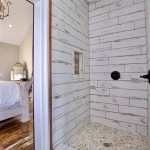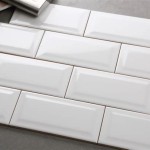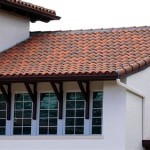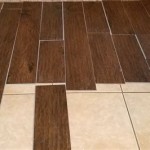```html
Make A Splash With Pool Tiles In Korean Architecture
Korean architecture, renowned for its harmony with nature, minimalist aesthetic, and rich cultural heritage, has increasingly embraced modern design elements. This includes the integration of high-quality pool tiles, adding a touch of contemporary luxury to traditional Korean-inspired spaces. The selection and application of these tiles are crucial to achieving the desired aesthetic and ensuring the longevity and functionality of the pool.
This article will explore the growing trend of using pool tiles in Korean architecture. It will delve into the types of tiles commonly used, design considerations specific to the Korean aesthetic, and the practical aspects of installation and maintenance. The goal is to provide comprehensive information for architects, designers, and homeowners looking to enhance their pool area with tiles that complement the unique character of Korean architecture.
Tile Types and Material Considerations
The first step in integrating pool tiles into a Korean architectural project involves selecting the appropriate tile type and material. Several options are available, each with its own set of advantages and disadvantages. The choice depends on factors such as the desired aesthetic, budget, durability requirements, and maintenance considerations.
Ceramic tiles are a popular choice due to their affordability, wide range of colors, and ease of installation. They are relatively resistant to water damage and chemicals, making them suitable for pool environments. However, ceramic tiles can be susceptible to cracking and chipping, especially in areas with significant temperature fluctuations. Porcelain tiles, on the other hand, are denser and more durable than ceramic, offering greater resistance to frost damage, staining, and fading. They are a premium option that provides long-lasting performance and aesthetic appeal. Glass tiles are another frequently employed option and are appreciated for their vibrant colors, reflective properties, and ability to create stunning visual effects. Glass tiles are non-porous, making them highly resistant to water damage and staining. However, they can be more expensive than ceramic or porcelain tiles and may require specialized installation techniques.
Natural stone tiles, such as granite, slate, and travertine, offer a unique and luxurious look. They are durable and weather-resistant, making them suitable for outdoor pool areas. However, natural stone tiles can be more porous than other materials, requiring sealing to prevent water damage and staining. Additionally, the variation in color and texture can create a more rustic aesthetic, which may not always align with the clean lines and minimalist principles of certain Korean architectural designs. Mosaic tiles are also common, offering versatility in design. These smaller tiles, typically made of glass, ceramic, or stone, can be arranged in intricate patterns and designs, allowing for a high degree of customization. Mosaic tiles are particularly well-suited for creating decorative accents or border designs.
Beyond the core material, the finish of the tile plays a critical role in both the aesthetic and functionality. Glossy tiles, while visually appealing, can become slippery when wet, increasing the risk of accidents. Matte or textured tiles offer better slip resistance, making them a safer choice for pool decks and surrounding areas. Consider the slip resistance rating (typically measured using the Dynamic Coefficient of Friction, or DCOF) when selecting tile finishes, especially for areas prone to water exposure.
Design Integration with Korean Architectural Principles
Successfully integrating pool tiles into Korean architecture requires careful consideration of the principles that define this unique style. Korean architecture emphasizes harmony with nature, simplicity, and balance. These principles should guide the selection of tile colors, patterns, and overall design.
Color palettes in traditional Korean architecture often draw inspiration from the natural environment. Earth tones, such as browns, greens, and grays, are commonly used to create a sense of grounding and connection to the surrounding landscape. These colors can be incorporated into pool tile designs to achieve a cohesive and harmonious look. For instance, using beige or light gray tiles can create a serene and calming atmosphere, while incorporating green or blue accents can evoke the feeling of natural water features. It's also important to consider the colors of the surrounding buildings and landscaping to ensure that the pool tile design complements the overall aesthetic.
Simplicity is another key element of Korean design. Rather than elaborate patterns or intricate designs, focus on clean lines and minimalist aesthetics. Large-format tiles can create a sense of spaciousness and modernity, while simple geometric patterns can add a subtle touch of visual interest without overwhelming the space. Avoid using overly ornate or decorative tiles, as they can clash with the overall minimalist design principles. The use of a single color or a limited palette of complementary colors can also help to maintain a sense of simplicity and elegance.
Balance and symmetry are also important considerations. Traditional Korean architecture often incorporates symmetrical layouts and balanced proportions. This principle can be applied to pool tile designs by creating symmetrical patterns or using tiles to define distinct zones within the pool area. For example, a symmetrical border design can create a sense of order and harmony. Consider the placement of the pool within the overall landscape and ensure that the tile design complements the surrounding architectural elements. The pool should feel like a natural extension of the landscape, rather than a separate and distinct entity.
Beyond color and pattern, consider the texture of the tiles. A natural stone tile with a textured surface can create a tactile connection to the earth, while a smooth glass tile can reflect light and create a sense of openness. The lighting, both natural and artificial, should be considered when selecting pool tiles. The way light interacts with the tiles can significantly impact the overall aesthetic. In addition, understanding Korean design principles is essential, particularly the concept of "Maang," which refers to the intentional use of empty space in design. Applying this principle to pool design can create a sense of tranquility and openness. This involves incorporating the design of the surrounding landscape, the sky and other contributing factors to the overall space.
Practical Considerations for Installation and Maintenance
Selecting the right pool tiles is only the first step. Proper installation and ongoing maintenance are essential to ensure the longevity and performance of the tiles. Improper installation can lead to water damage, cracking, and other problems, while neglecting maintenance can result in staining, algae growth, and a compromised aesthetic.
Installation should always be performed by experienced professionals who are familiar with the specific requirements of pool tile installation. The substrate (the surface beneath the tiles) must be properly prepared to ensure a stable and level base. This may involve applying a waterproof membrane to prevent water penetration and using a high-quality mortar that is specifically designed for pool environments. The tiles should be carefully aligned and spaced to create a uniform and aesthetically pleasing finish. Grouting is a critical step in the installation process. The grout should be applied evenly and thoroughly to seal the gaps between the tiles and prevent water from seeping beneath. Choose a grout that is specifically designed for pool environments and is resistant to chemicals and staining. Also, consider the impact of weather on the installation process. If the installation is done outdoors, protective measures may be necessary to properly set the grout.
Regular pool maintenance is essential to keep the tiles clean and prevent damage. This includes regular brushing to remove dirt and debris, as well as periodic cleaning with a mild detergent and water. Avoid using harsh chemicals or abrasive cleaners, as they can damage the tile surface. Inspect the grout regularly for cracks or signs of deterioration. If any damage is detected, repair it promptly to prevent water damage. Also, maintain proper water chemistry. Imbalanced pH levels can damage the tiles and lead to staining or scaling. Regularly test the water and adjust the chemical levels as needed. Pool covers can also protect the tiles from harsh weather conditions and reduce the need for frequent cleaning.
In colder climates, consider the potential for freeze-thaw damage. Water that seeps into the tiles or grout can freeze and expand, causing cracks and deterioration. Consider utilizing frost-resistant tiles rated for the climate, and implement measures to protect the pool during the winter months, such as draining the pool or using a pool cover. Consulting with a pool professional can provide valuable insights into the specific needs of the pool and recommend appropriate maintenance strategies based on the local climate and water conditions. Furthermore, consider the environmental impact of the tile choices. Opt for sustainable materials and installation practices that minimize waste and reduce the carbon footprint.
```
The Nautilus Seagrove Beach Fl 2025 Updated S Deals

Casa Las Caglias Flims 2025 Updated S Deals

Diy Humpback Whale Ceramic Tile Mosaic Backsplash Or Wall Art

Top 10 Best Swimming Pools In Mclean Va Updated 2025 Yelp

Top 10 Best Hot Tub Pool In New Orleans La Updated 2025 Yelp

Modern Concepts Tile Your Custom Design Experts

3 X6 Copper Subway Tile Limited Edition Mix Of Color Texture W Aqua And Natural Patina By Tileze 41924 For Backsplash Splashback Bar

Top 10 Best Swimming Pools In Tysons Corner Va Updated 2025 Yelp

Top 10 Best Lap Pool In Dc Updated 2025 Yelp

Beach Ceramic Tile Wall Mural Pt500082 36 W X 24 H 6x6 Tiles
Related Posts








